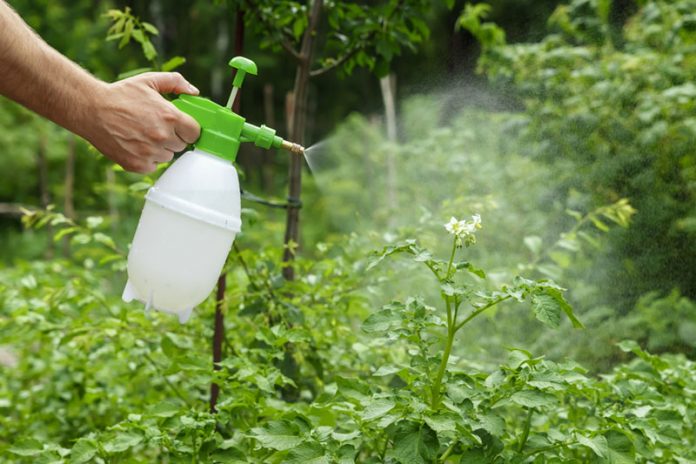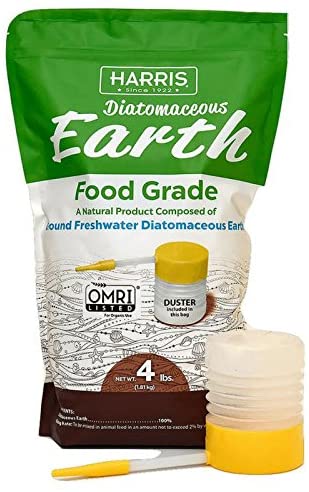Birds are chirping, temperatures are rising, and we’re starting to spend more time in our garden. For those of us who have latched on to the wellbeing and sustainability benefits of gardening, we might be familiar with something(s) trying to undermine that: garden pests.
Fortunately, thanks to natural and DIY pesticides we don’t have to give up on sustainability to get rid of pesky insects and animals. And in fact, creating your own pesticide is probably much easier than you think and can be accomplished with a few simple household ingredients.
What’s Wrong with Conventional Pesticides?
Between reports of neonicotinoids killing bee populations to all of the human concerns that come with most conventional pesticides, it’s clear that the way we’re getting rid of insects and other pests needs to change.
Here’s a current situation: we grow fruits and vegetables that humans like, but pesky little insects do, too. Unfortunately, our most common way of taking care of the situation involves heavy use of toxic chemicals—which is wreaking havoc on our planet, flora, and fauna.
Let’s start with the impact of pesticides on our environment. Think about it like this, if it’s something designed to harm, damage, or kill one living being, isn’t it safe to assume that it can do damage in unintended areas, too?
And this is the case. In addition to controlling a certain insect species, pesticides can also be toxic to a range of other types of organisms including beneficial insects, plants, fish, and birds.
Additionally, pesticides have been known to contaminate soil, vegetation, and water. In fact, in a U.S. Geological Survey, more than 90% of water samples were found to have been contaminated with at least one, but typically several, pesticides.
Using that same rationale, we can also consider the potential of pesticides to be harmful for human health, too.
According to the Environmental Protection Agency, pesticides can pose risks to people. Some of these complications include subtle impacts like skin or eye irritation, while others are due to the fact that many pesticides are known to be carcinogens or endocrine/hormone system disruptors. And in some of the worst-case scenarios, some pesticides can affect the nervous system.
When it comes to the latter, some types of pesticides can lead to dizziness, vomiting, diarrhea, seizures, respiratory failure, and even coma and/or long-term neurological symptoms (NCBI).
Okay, enough with the bad. Let’s talk about natural ways to protect our growing plants.
5 Natural and DIY Pesticides
1. Baking Soda Pesticide
Is there anything that baking soda can’t do? We’ve already mentioned it when we looked at DIY household cleaners, but thanks to a recipe from Epic Gardening, we know that it’s great for outdoor uses, too.
Here’s a baking soda based pesticide that is a great way to kill whiteflies, spider mites, and aphids. However, it won’t do any harm to beneficial insects or vegetables or flowers.
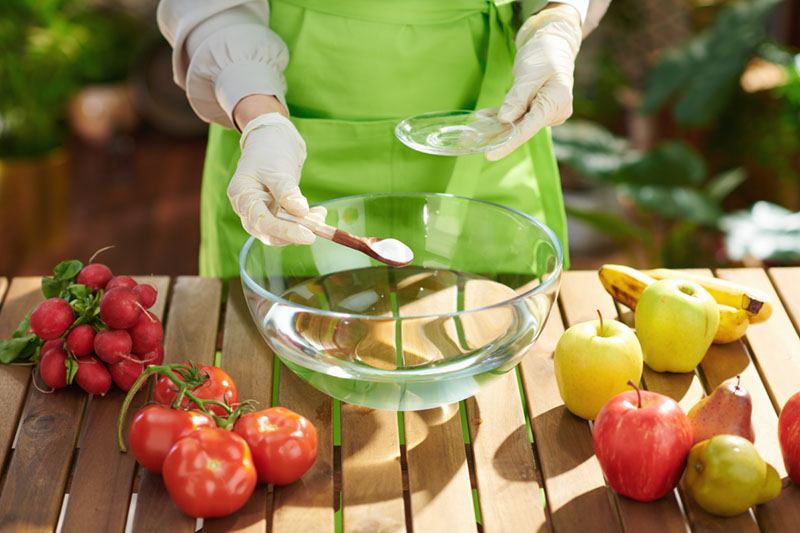

Ingredients:
- 1 teaspoon of baking soda
- ⅓ cup of olive oil (or other type of cooking oil)
- 1 cup of water
Instructions:
Simply combine all ingredients in a spray bottle and thoroughly shake. spray in the areas of your garden impacted by pests and repeat daily, or as needed.
If you have issues with rabbits, you can sprinkle baking soda directly on flower beds to prevent them from nibbling on the buds. Similarly, baking soda can also be sprinkled directly on plants that have been getting eaten by slugs.
Lastly, baking soda and a small amount of vinegar can be applied to an ant hill, to prevent an explosion of ants.
2. Diatomaceous Earth Pest Prevention
Diatomaceous earth is pretty fascinating in its own right. It’s made from fossilized remains of prehistoric algae or phytoplankton (also known as diatoms) and sourced from ancient lakes and river beds—making it 100% natural.
Even more fascinating, diatomaceous earth is also technically considered a pesticide under the Pest Control Act. However, unlike chemical based pesticides, this works in a mechanical way.
If you were to look at diatomaceous earth under a microscope, you would see spiky cylinders, much like a barbed wire fence. In fact, it can be used like a fence. You can create a barrier around your precious plants, as the barbs will penetrate an insect’s body—and it works well to control red and black ants, silverfish, and darkling beetles.
However, as a word of caution, diatomaceous earth is not selective when it comes to which insects that it can harm, so be sure to keep it away from known beneficial insect populations.
Earth Easy can help us use it correctly.
Ingredients:
- Diatomaceous earth, that’s it!
Instructions:
Using diatomaceous earth as a pest control method will require you to do a little research. You’ll want to identify what pests it is that you’re trying to stop, and then get to know the way they travel. Look for areas in which they always gather or traverse and sprinkle a line that they will be likely to cross.
Some insects, ants especially, will be on to you pretty quickly, so you might have to make a few additional lines once they change their path.
In the garden, you can also directly apply diatomaceous earth to plants to protect against cutworms, aphids, and some types of beetles. Just don’t apply it on flower heads, because bees might come into contact with the pesticide.
3. Insecticidal Soap
Insecticidal soap is just as easy as it sounds, and it only needs two ingredients! We turned to Horticulture Magazine to help us with the recipe.
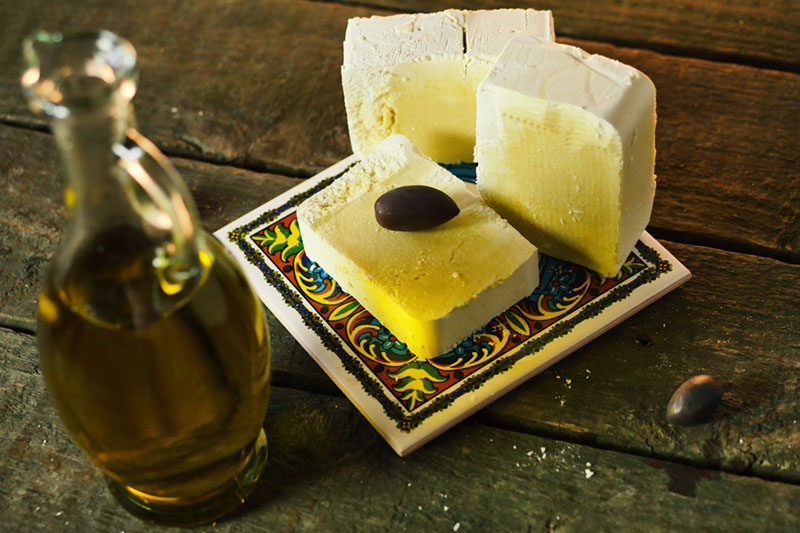

Ingredients:
- 1 tablespoon of pure castile liquid soap (free from fragrance and other chemicals)
- 1 quart of water
Instructions:
Combine the ingredients in a clean spray bottle, shake, and use immediately. Apply directly to any infected plants, spraying from top to bottom. You want to be sure that you apply the insecticidal soap so that it comes in contact with the insects themselves.
This homemade and eco-friendly insecticidal soap will kill insects like thrips, white flies, leafhoppers, mites, and aphids.
4. Neem Oil Pesticide
For those unfamiliar with neem oil, it’s a concentrated plant-based oil that comes from the seeds of the Indian neem tree. Most commonly, it’s cold pressed into an extracted high quality virgin neem oil, which is what should be used as an insecticide.
Homestead and Chill helped us with the recipe, and they also recommend to only use 100% pure neem oil.
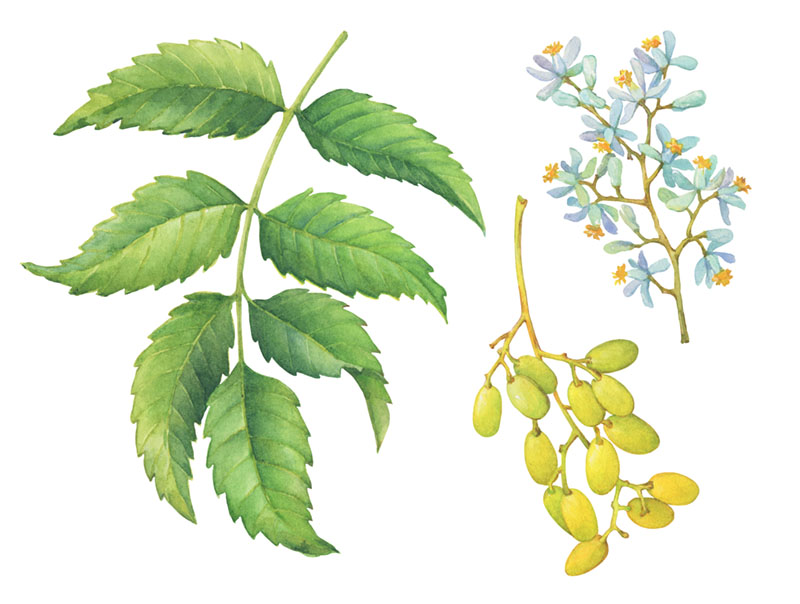

Ingredients:
- 1 gallon of warm water
- 1 tablespoon of cold pressed neem oil
- 1 tablespoon of liquid castile soap, and/or a few drops of essential oils (peppermint, eucalyptus, tea tree, orange, and lavender all work as insect repellents)
Instructions:
If you know anything about oil and water, you know that they don’t mix well. This means that for this insecticide to work as intended, you have to emulsify the ingredients (AKA shake thoroughly with soap until mixed, and use immediately).
Like with some of these other natural in DIY pesticides, it’s best to apply this one in the evening, as direct sunlight may contribute to burnt leaves.
You’ll want to fully drench the plant until the solution is dripping off the leaves. Make sure to get the underside of the leaves also. This can be applied as frequently as necessary, but not more than once per week.
Ultimately, you should see that this is effective in getting rid of small and soft-bodied insects like mites, mealybugs, whiteflies, strips, and aphids. While it is not known to be toxic to bees or other beneficial insects, it may repel flies, moths, butterflies, and mosquitoes.
5. Rubbing Alcohol Pest Control
Courtesy of Bob Vila, here’s an easy way to get rid of mealybugs, scale insects, thrips, whiteflies, and those super annoying aphids.
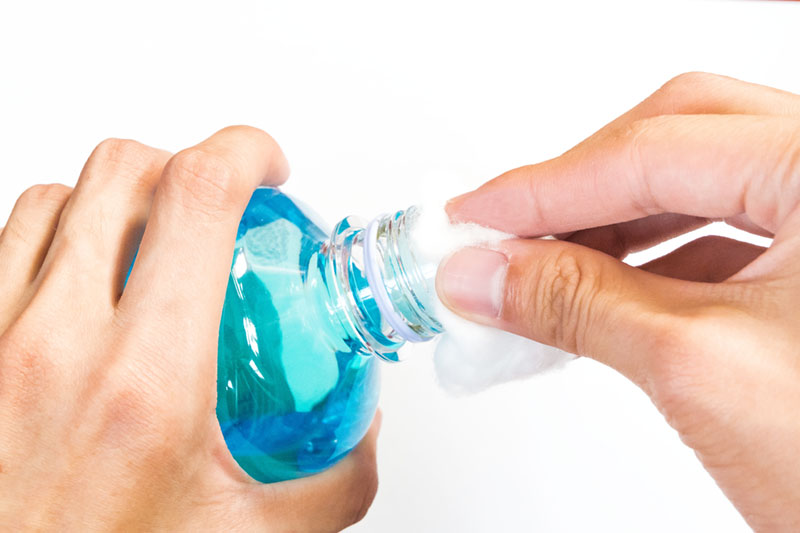

Ingredients:
- ½ cup rubbing alcohol
- 1 quart liquid soap
Instructions:
Mix the two liquids in a spray bottle, shake, and then spray directly on your plants. Leave for 20 minutes, then rinse with water. Repeat this every three days over a two-week period, or until you don’t see any more bugs.
WARNING: Avoid doing this in direct sunlight, as the solution can burn leaves of your plants.
Final Thoughts on Natural and DIY Pesticides
We’d love to know if you have any more recommendations for natural and DIY pesticides. If so, please feel free to share them in the comments!

